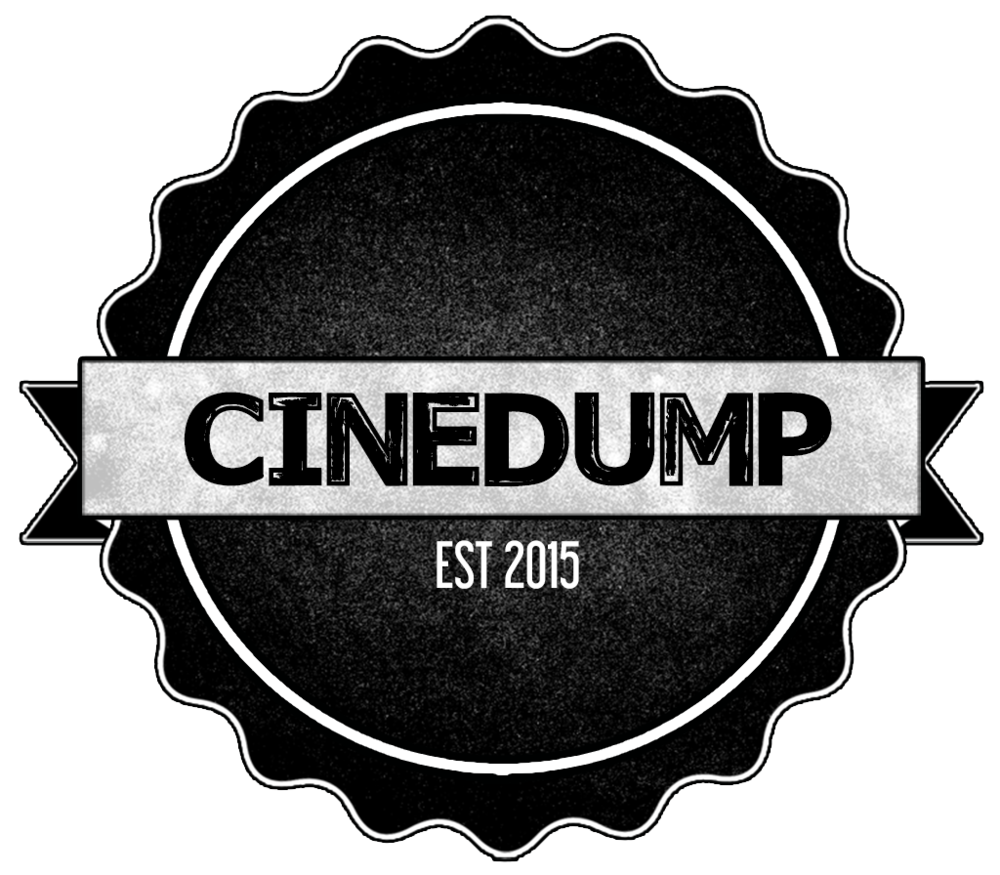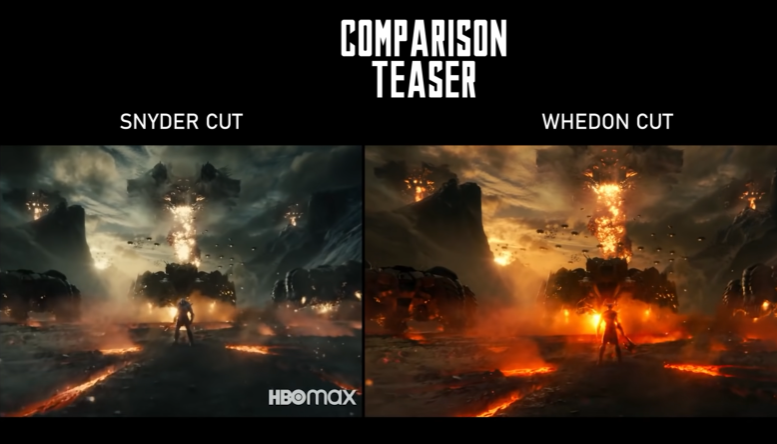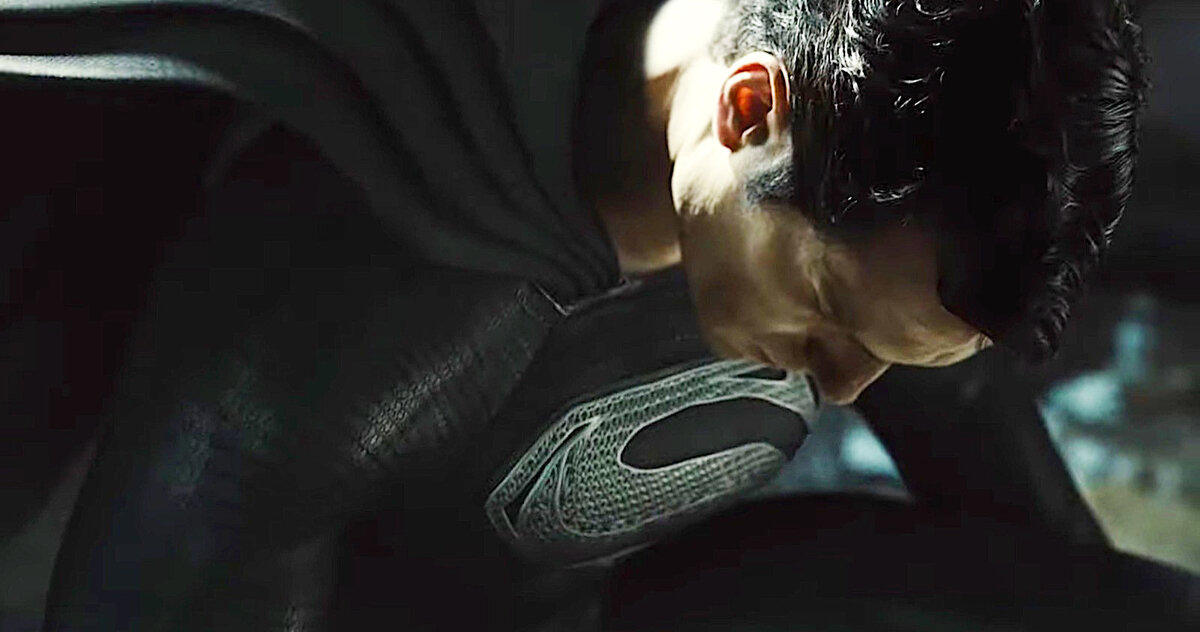If you go down the right rabbit hole on Twitter, you’ll find a corner of fandom that has become infamous. They regularly share images of Zack Snyder photoshopped as Jesus and refer to him as “Zack” as if they’re all old friends. When behind the scenes images from Batman V. Superman: Dawn of Justice were released featuring Zack Snyder posing with a prop gun, these fans posted photoshops of Snyder aiming the weapon at fellow DC producers Geoff Johns, Jon Berg, Joss Whedon, or anyone else that they perceived to be an enemy of Snyder’s. Conspiracy theories run amok in this group about how Geoff Johns intentionally sabotaged Justice League because of a grudge against Snyder, that Joss Whedon was secretly a sleeper working for Disney with orders to sabotage JL, that Disney pays critics to give Snyder’s DC films poor reviews, or how Disney stole the original script for BvS and turned it into Captain America: Civil War. In their minds, Zack Snyder is a misunderstood genius, and he and his films are victims of a scheming studio and biased critics. Ask anyone about what happens after they said anything negative about Snyder or his films online and they’ll tell you about how these people appeared out of the woodwork to harass them, including death threats on occasion. Before the announcement of Zack Snyder’s Justice League coming to HBOMAX, the official WB Twitter account couldn’t send a tweet without being flooded with countless accounts responding with “Release the Snyder Cut”. AT&T, owner of Warner Brothers, found their customer service numbers flooded with mass call-ins demanding the Snyder Cut, and at one point an airplane flew over Warner’s lot with a banner reading “Release the Snyder Cut”. It’s gotten to the point where words like “Zack Snyder” or “Justice League” have become something like an internet version of “Voldemort”, names you dare not invoke for fear of the wrath of his followers.
But what is it about Zack Snyder and his films that inspires such a devoted, fanatical fan-base that many have dubbed “The Snyder Cult”? For that answer, we’ll have to go way back to 1997 and the release of Batman and Robin. Batman was once the only comic franchise in theaters, but B&R underperformed at the box office and garnered poor reviews which sent the franchise into an eight-year hibernation. Most of the criticism of Batman and Robin was aimed at the film’s lighter, campier tone, and for the next eight years, anytime a new Batman film was mentioned, the words “dark” and “serious” were often spoken in the same breath. The unintended consequence of this was that an entire generation of fans started to see anything light-hearted as bad and that superhero movies, particularly Batman, had to be treated with the utmost seriousness if they were going to be successful.
This was only reinforced when Christoper Nolan’s Batman Begins was released to decent box office and critical acclaim in 2005. A grounded, realistic take on the Dark Knight, Begins was successful enough to warrant a sequel, which broke box office records, earned better reviews than the first film, and became a full-on cultural phenomenon in summer 2008. The Dark Knight doubled down on the gritty realism from the first film, giving us a comic book movie that felt more like a Michael Mann police drama. Not only did critics and audiences love it, but for a time, it looked like TDK could be a serious Oscar contender in 2008. Though many comic book movies had been successful before it, The Dark Knight felt different, it felt like people were looking at comic book movies seriously and seeing them as legitimate films, not just crowd-pleasing popcorn flicks. As always, many fans, as well as studio execs, took the wrong lesson from the success of TDK and started to mistake tone for content, believing that dark and serious was the way to go for comic book properties, particularly DC.
But something else happened in 2008 – Iron Man, the inaugural film in the now massively successful MCU. Promising to be the first in a sprawling series of interconnected films, Iron Man lead to The Avengers in 2012, a superhero team-up film uniting characters from several different franchises into one movie. The MCU was strikingly different from the Batman films at WB in the sense that they were more lighthearted, laced with humor, and family-friendly, which many credit for its success. Like The Dark Knight before it, The Avengers was a massive success and cultural phenomenon, and soon every studio wanted in on that sweet, sweet, shared universe money. To Warner Brothers’ credit, they had been trying well before 2012 to get a DC shared universe off the ground. In the early 2000s, WB attempted to make a Batman vs. Superman movie with a plan to spin both heroes off into solo films after, but that never came to fruition. Later, in 2007, WB started development on a Justice League film with director George Miller at the helm, aiming to release in 2009 to beat Marvel in making a team-up film, but the writer’s strike killed that project.
Then a Green Lantern film went into production, signing Ryan Reynolds as the lead, Martin Campbell directing, and a script by Greg Berlanti and Marc Guggenheim (who now oversee the CW “Arrowverse”). Berlanti and Guggenheim were open about their GL film hopefully starting a shared DC cinematic universe, and early drafts of the script featured cameos from Clark Kent and fellow Green Lanterns Jon Stewart and Alan Scott. The plan was that if Green Lantern was a success, then a Flash film would go into production, also with a script from Berlanti and Guggenheim where Reynolds’ Hal Jordon would show up in a post-credit scene, officially uniting both films. Unfortunately, Green Lantern was a box office disappointment, critics and audiences were lukewarm to it, and the film is all but forgotten except for being the butt of jokes in the Deadpool films. All hope was not lost though on a DC cinematic universe, for another film was in development...
Zack Snyder had become something of a golden boy for WB after the success of 300, and after that, he moved on to direct the long in development Watchmen adaptation for the studio. Though his most recent film, Sucker Punch, had been a critical and commercial failure, getting Snyder to direct a reboot of Superman for the studio seemed like a major win. With Christopher Nolan on board as a producer, word quickly spread that this new Superman would be more grounded and realistic than previous adaptations of the character. Expectations were high for Man of Steel, and hopes of starting a new series of DC interconnected films rested squarely on the film’s shoulders. Rumors and speculation swirled that Gina Carano, who was dating star Henry Cavill at the time, would appear in the film as Wonder Woman after being spotted on set several times, and further rumors of a Justice League film being in development further teased fanboys of a possible DC cinematic Universe to rival Marvel at the box office.
Man of Steel came out in 2013, a year after The Avengers showed the world that Marvel was here to stay. The new Superman film did not receive the hero’s welcome that fans and the studio were expecting, and instead divided critics and audiences who took issue with the darker portrayal of Superman, the death of Jonathan Kent, the mass casualties from the Kryptonian attack, and the controversial ending where Superman kills General Zod. Fans of the film went on the defensive almost immediately, and spirited online debates formed the seed that would grow into a massive persecution complex that defines the Snyder Cult. Later in summer 2013, WB announced that the follow-up to Man of Steel would be a Batman vs. Superman film, once again with Snyder at the helm. Originally set for release in summer 2015, BvS ended up getting pushed back to Spring 2016, and in 2014 WB announced a whole slate of DC films, including two Justice League films directed by Snyder, positioning him as the unofficial Godfather of the newly christened DC Extended Universe, or DCEU.
Three years between films is an eternity on the internet, all the while the fans of Man of Steel became more and more impassioned while online scoopers and rumor mongers fed the hungry beast with outlandish, and often false, “leaks” around the film and possible future DC movies while also stoking the flames of the mostly manufactured DC vs. Marvel feud. Supposed industry insiders painted Marvel as an assembly line movie factory that stifled the director’s creative vision while painting the upcoming DCEU as something fresh and bold. Comments from Snyder and other directors seemed to confirm that the DCEU would be a sandbox that anyone could play in and be given the freedom to make their own films. The future looked rosy for DC fans, who would be given plenty of new content yearly after 2016. In interviews, Snyder seemed passionate about his films and open about the themes he wanted to explore, and fans took to him and his love of the movies he was making. Snyder became someone that fans projected themselves, an uber-nerd living the dream of making edgy, adult-orientated comic book movies. Handsome, in-shape, and successful, Snyder also seemed to become an aspirational figure for these fans as well. As their devotion to Snyder grew, fans began to point out supposed symbolism in Man of Steel and used comments from Snyder himself to argue that the film was much deeper than many gave it credit for and that the upcoming Batman and Superman movie would continue to explore deep, philosophical themes that, in their minds, many comic book movies weren’t.
Leading up to March 2016, word went out that Batman V. Superman screened for WB execs and received a standing ovation, and Justice League was set to go into production immediately after the film’s release. Then early reviews went out, with one reviewer correctly predicting that BvS would be even more polarizing than its predecessor, and the film went on to mixed-negative reviews and poor audience reception. Despite a massive opening weekend, the film took a steep plunge on its second week in theaters. The fans who had been on the defensive since 2013 took things up a notch, blaming critics for having a bias against Snyder, among other justifications for the film’s poor reception. In their mind, BvS was a thought-provoking art film, something too dense for most audiences to understand. Critics and Disney were the bad guys, out to turn people against the misunderstood genius Snyder and his (in their minds) deep, thoughtful superhero films, but soon, they would have a new boogeyman to blame.
Justice League went into production soon after, but the attitude from WB was that of course correction, and the unspoken inference was that WB wanted their superhero films to be something more in line with what the MCU was doing. Eventually, it was announced that JL would be undergoing reshoots but without director Zack Snyder, who was stepping away after a family tragedy and would be replaced by Joss Whedon, director of the first two Avengers films, who was also writing new scenes for the film. Justice League, now dubbed “Josstice League” by the cult, was released in fall 2017 to poor reviews, and tepid box office from an uninterested audience. Almost immediately, word started to spread around the internet about Snyder’s original plan for the film. Whedon, Geoff Johns, John Berg, and various other figures in DC and WB became the bad guys, a shadowy cabal intent on ruining Zack Snyder and his vision for DC.
Snyder’s fans now had a cause to rally around and a new purpose. People’s entire online identities became devoted to Snyder and his lost cut of the film, and “Release The Snyder Cut” became their rallying cry. Snyder himself would often rouse his base up with posts or inferences about his lost cut of Justice League, drawing criticism from some for not doing enough to rein in his rabid supporters, and in some cases, seeming to indirectly encourage them. Still, the cult’s full attention was turned towards WB and getting the director’s original vision released. Now, in a few short weeks, their efforts will pay off when Zack Snyder’s Justice League premieres on HBOMAX, and his fans, the Snyder Cult, will finally have what they wanted...
Or will they?
Because their true objective was never to get the Snyder Cut released. When the film comes out, no matter what critics or viewers say, the Snyder Cult will claim that it’s brilliant, a work of genius from a true auteur, and they’ll foist that opinion on anyone who disagrees with them because what the Snyder Cult really wants is validation. While the Marvel heroes were out having all the fun, the DC heroes were sitting on the bench, waiting for their turn at bat. These fans defended Man of Steel so vehemently because that film looked like the last, legit shot at DC shared universe which was further endangered by the poor reception to BvS. They see how people love the MCU, how packed the theaters are for a Marvel movie on opening night, how people share memes about the newest Marvel movie, and they want that for their DC films. The Snyder Cult wants so desperately for these films to be loved and accepted by the mainstream and their bitterness at critics and Disney stems from that.
DC has had many successes since BvS, and on the surface, one would think that these films would give the Snyder Cult the validation they so crave. Wonder Woman was released in summer 2017 and was the first bonafide success for the DCEU, earning praise from critics and audiences and became a massive box office smash, but the only ones who weren’t pleased with its success were The Snyder Cult, who claimed that Snyder wasn’t getting the proper credit for the film’s success (Snyder is credited as a producer on the film as well as having a story credit). Despite claiming that creative freedom is central to their movement, these fans also railed against Aquaman, Shazam, and Birds of Prey for being too lighthearted and not looking and feeling like a Zack Snyder movie. There’s something else at play here though, because with the exception of Birds of Prey (which garnered positive reviews and audience scores) these films were successful at the box office, well-reviewed, and well received by audiences, unlike Snyder’s films. The idea that a movie can only be good if it’s dark and serious has become so ingrained in them that they can’t fathom why people love the MCU so much and why later DC films have been successful. They have tied their entire online identities to one man and his films that never connected with general audiences but in their desperation to convince people of the hidden genius of Snyder’s work, they miss the one thing that makes the MCU successful and where MoS and BvS failed: character.
The MCU succeeds because it made audiences fall in love with a talking raccoon and a tree that can only speak one sentence. Iron man 2 and Thor: The Dark World are generally considered to be the weakest Marvel movies but audiences still showed up to see Iron Man 3 and Thor: Ragnarok because they still liked the characters of Thor and Tony Stark enough to see more of them (Thor’s ongoing popularity is arguably why he’s the first Marvel character to get a fourth solo film). Man of Steel and Batman V. Superman failed to make audiences like or care about new incarnations of two of the most popular and iconic superheroes of all time. In Birds of Prey, Harley Quinn had more chemistry with a breakfast sandwich than Superman did with Lois Lane in two movies. A film can have all of the deep symbolism in the world, but if the audience doesn’t care about the characters and their relationships with each other then they aren’t going to come back for seconds. Aquaman, Wonder Woman, and Shazam didn’t succeed because of a lighter tone, they were successful because they made people care about the heroes and the stakes in the story.
It’s hard to say where things will go for the Snyder Cult from here, but there are signs of things to come. Already some of them have started a “Restore the Snyder-Verse” movement to get Zack Snyder to direct more DC movies, and others have loudly started campaigning for Ben Affleck’s Batman to get his own movie despite the upcoming Flash film being confirmed to be Affleck’s last turned under the cape and cowl. Odds are that these fans will continue to try and convince naysayers that Snyder’s films are just misunderstood art films masquerading as superhero movies. One thing that seems obvious though is that after the Snyder Cut is released, they will want more, because a person can tie their entire personality to a filmmaker and a movie, but at the end of the day, that’s just a temporary band-aid to fix a deep, yearning desire to be accepted.
James Reinhardt











